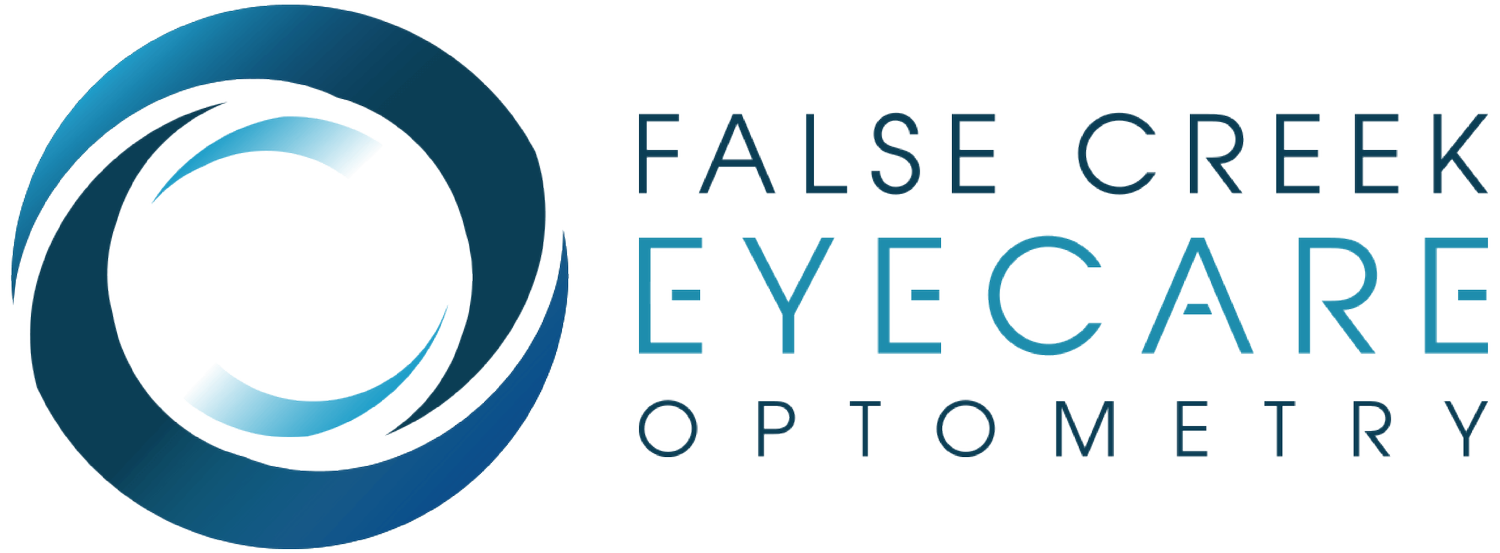
Treat Dry Eyes. For Good.
At False Creek Eye Care, we offer personalized and holistic care. Treating dry eye is our passion. We are dedicated to providing you with symptom relief and getting to the root of the dry eye disease.
-
Eyelid Problems: Malfunctioning or inadequate eyelid function, such as meibomian gland dysfunction (MGD), can lead to decreased tear production and increased evaporation.
Environmental Factors: Exposure to dry, windy, or smoky environments can lead to increased evaporation of tears and exacerbate dry eye symptoms.
Screen Time: Prolonged use of digital devices like computers, smartphones, and tablets can reduce blink frequency and cause dry eyes.
Contact Lenses: Improper or overuse of contact lenses can lead to decreased tear film stability and cause dryness.
Medical Conditions: Certain medical conditions such as Sjögren's syndrome, rheumatoid arthritis, lupus, thyroid disorders, and diabetes can be associated with dry eye syndrome.
Medications: Some medications, including antihistamines, decongestants, hormone replacement therapy, and antidepressants, can reduce tear production and cause dry eyes as a side effect.
Hormonal Changes: Hormonal fluctuations, particularly in women during pregnancy, menopause, or while using oral contraceptives, can contribute to dry eye symptoms.
Age: As people age, tear production tends to decrease, making older individuals more susceptible to dry eye.
Eye Surgeries: Certain eye surgeries, such as LASIK or cataract surgery, can cause temporary or long-term dry eye symptoms.
Allergies: Allergic reactions affecting the eyes can trigger dryness and discomfort.
Nutritional Deficiencies: A diet lacking in essential fatty acids or vitamin A/D can contribute to dry eye problems.
Occupational Factors: Certain professions that involve prolonged focus on a specific task, like computer work or reading, can lead to reduced blink rate and dry eyes.
-
Dryness /Irritation
Redness
Tearing/Watery Eyes
Sensitivity to Lighy
Blurred Vision/Eye Fatigue
-
LipiScan is based on patented dynamic meibomian imaging technology to generate high-definition images of meibomian glands. The imaging will allow the optometrists to assess the health of your glands, and to further customize the best dry eye treatment options.
Vital dyes are placed on the eye to view damaged cells on the cornea, conjunctiva, and lid margin. This aids in diagnosis and helps to visualize the current status of your ocular surface.
I-Pen Osmolarity is an electronic diagnostic device for the quantitative measurement of osmolarity (concentration of dissolved salts) of human tears. This is an important tool in monitoring the progress of aqueous-deficient dry eye syndrome (primarily in those with auto-immune conditions and/or Sjogrens).
-
Artificial Tears: Over-the-counter lubricating eye drops, known as artificial tears, can help moisturize the eyes and provide temporary relief from dry eye symptoms.
Meibomian Gland Expression: For patients with meibomian gland dysfunction (MGD), a common cause of dry eye, an eye care professional may perform a procedure to express and clear the blocked glands, helping to improve the quality of the tears.
Blepharitis Management: If blepharitis (inflammation of the eyelids) is contributing to dry eye, proper eyelid hygiene, Bleph-Ex Zest can help manage the condition.
Omega-3 Fatty Acid Supplements: Omega-3 fatty acids have been shown to improve tear production and reduce inflammation.
Moisture Chamber Goggles: These specialized goggles help to retain moisture around the eyes, particularly in windy or dry environments.
Prescription Steroid Eye Drops: In cases of inflammation, short-term use of prescription steroid eye drops may be recommended to reduce swelling and irritation.
MiboFlo®: This is a specialized treatment that applies heat and gentle pressure to the meibomian glands to improve their function in cases of MGD.
Intense Pulsed Light (IPL) Therapy: IPL treatment has been shown to be effective in reducing inflammation and improving symptoms of dry eye, especially in patients with meibomian gland dysfunction.
WHAT TO EXPECT
Step 1
During the initial consultation, we will gather in-depth information regarding your symptoms and prior diagnoses. In the clinic, we will use advanced diagnostic testing to piece together the puzzle and complete your dry eye assessment.
Step 2
After the initial assessment, you will receive a detailed dry eye report, which will include your diagnosis and the expected timeline to achieve relief. We will provide you with a comprehensive treatment plan that may consist of at-home and in-office therapies.
ADVANCED DRY EYE TREATMENTS
LOW LIGHT LEVEL THERAPY
The Equinox LLLT uses a specially designed red wavelength LED light to increase cellular ATP activity in the cells of the meibomian glands. This will release the hardened oils and reduce overall inflammation.
For more information on LLLT, click here.
INTENSE PULSE LIGHT
IPL targets the inflamed blood vessels of the eyelids through controlled light pulses. This significantly reduces inflammation along the meibomian glands, allowing for better production of oils and alleviating the dry eye symptoms.
For more information on IPL, click here.
If you have any questions or wish to schedule an appointment, please call us at 604-872-4411 or send us an email.




